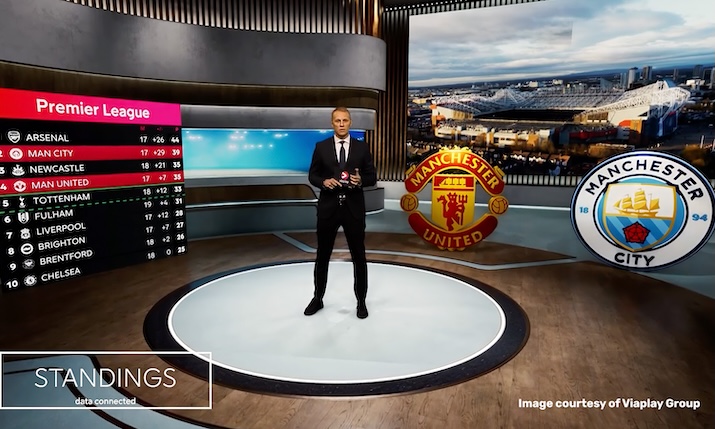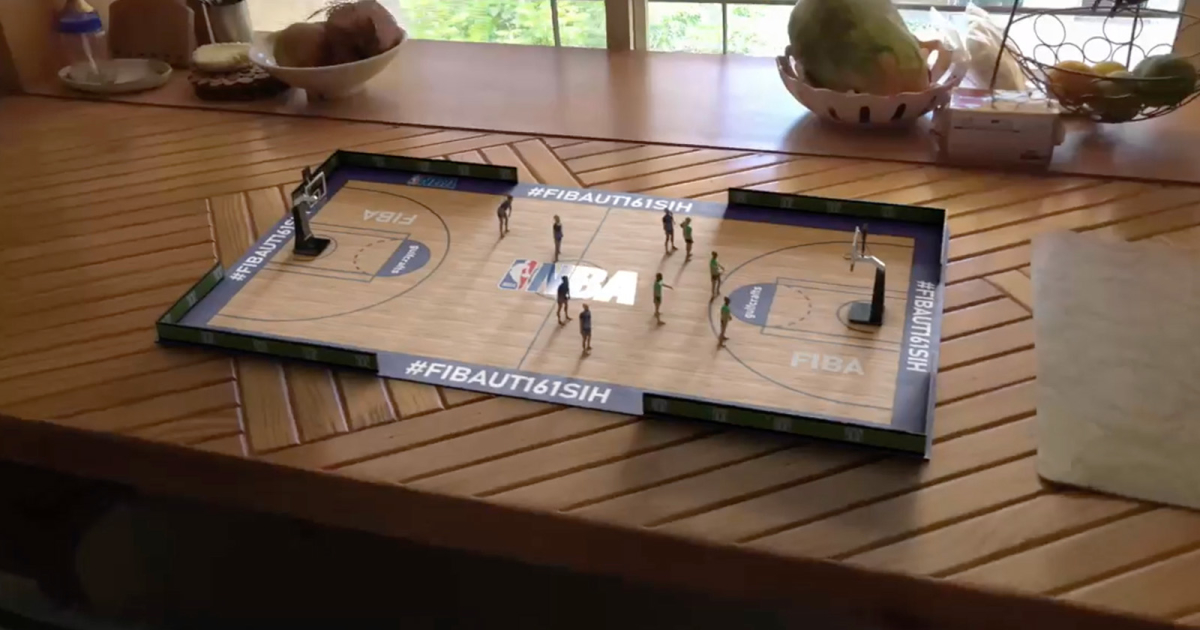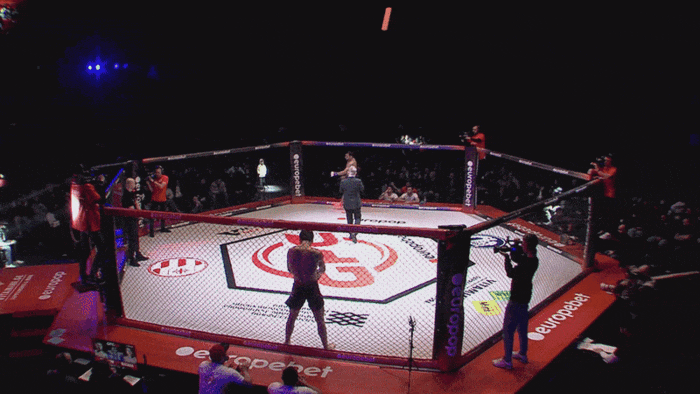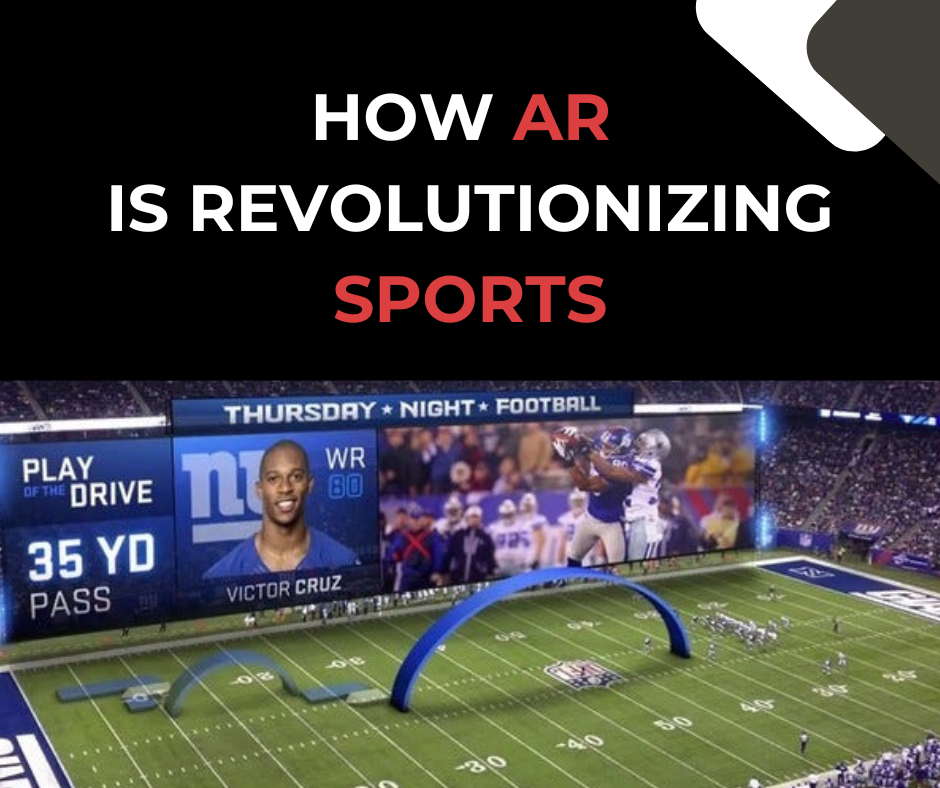Introduction: AR Technology Is Taking Over Sports
In August 2023, Tiffany & Co. turned heads at the US Open — not with jewelry, but with an AR-powered mirror that let fans interact with virtual trophies and tennis rackets adorned in shimmering digital diamonds. Created in partnership with Snap Inc., the activation blended luxury branding with immersive sports technology and became a prime example of innovative brand activations in live sports.
But Tiffany was far from alone. Platforms like ARound by Stagwell have brought AR technology in sports to life at NFL and MLB games, including the Minnesota Twins and Cleveland Cavaliers. These experiences enable interactive fan engagement like live mini-games, exclusive offers, and real-time interaction through smartphones.
These are not one-off experiments. From broadcast overlays and stat visualizations to mobile AR games and interactive advertising, augmented reality in sports sponsorship is rapidly becoming a core element of modern fan experiences and revenue models.
In this article, we’ll explore how AR is transforming:
- Sports broadcasting
- Fan engagement
- Sponsorship strategies
…and why this digital innovation is shaping the next era of sports media.
AR in Sports Broadcasting
Augmented reality is no longer a flashy add-on. It is a proven tool for increasing audience engagement and creating new monetization layers during live broadcasts. Technologies like those developed at PTF Lab enable virtual elements to be embedded in the live feed itself, expanding available ad inventory and enhancing the viewer experience in real time.
How AR Impacts Viewership and Behavior
Studies show a clear correlation between AR use and viewer engagement:
- A Vizrt survey found that 70% of fans in the US and UK believe 3D and AR graphics make sports broadcasts more compelling.
- NewscastStudio reports that AR features can boost fan engagement by up to 40%, encouraging interaction and extending time spent viewing.
- According to GlobalData, fans who engage with AR-driven content are more likely to buy merchandise, subscribe to content platforms, and interact with sponsors. This drives revenue throughout the sports ecosystem.

Real-World AR Success Stories in Live Sports
NFL: The iconic “first down” line, introduced by ESPN in 1998, laid the foundation. Today, AR overlays include real-time player stats, formation visualizations, and predictive play graphics.
NBA: Playoff broadcasts now feature shot trajectories, hot zones, and real-time player tracking with AR-enhanced data visualization.
MLB: Baseball coverage incorporates AR to display pitch speed, ball path, and probability heatmaps. This helps fans understand the game on a deeper level.
Olympics: Paris 2024 used AR to integrate athlete interviews from the Olympic Village directly into live coverage, along with immersive medal table graphics and data-rich visuals.
These aren’t experiments. They have established practices shaping how fans consume and engage with sports in real-time.
Let’s now take a closer look at how AR is transforming not just what fans see, but how they interact.
In the next section, we’ll explore how AR is redefining fan engagement across platforms, venues, and generations.
AR's Expanding Role in Fan Engagement Across Sports
Augmented Reality (AR) is revolutionizing fan engagement by offering immersive and interactive experiences that deepen the connection between fans and their favorite sports. Here are four notable examples:
ARound's Stadium-Wide AR Experiences
Stagwell's ARound platform has introduced shared AR experiences in stadiums for teams like the Minnesota Twins and Los Angeles Rams. Fans can use their smartphones to participate in real-time games, access exclusive content, and unlock promotions during live events. This initiative attracts younger audiences by gamifying the in-stadium experience.
YinzCam's Interactive AR Games
YinzCam, a developer of mobile apps for sports teams, has implemented AR features like virtual pop-a-shot games for fans of the Cleveland Cavaliers and Toronto Raptors. These experiences allow fans to engage directly with the game environment, enhancing their enjoyment and connection with the team.
NBA and Apple Vision Pro
In a groundbreaking partnership, the NBA and Apple introduced the "Tabletop" feature within the NBA app on Apple Vision Pro. This lets League Pass subscribers project a miniature 3D basketball court into their space, where digital avatars replicate player movements in real time.
UFC and Meta's Multi Year Partnership
The UFC announced a multiyear partnership with Meta as its first "official fan technology partner." This aims to enhance the immersive experience for UFC fans using Meta’s AI, AR, and social platforms like Facebook, Instagram, WhatsApp, and Threads. Meta branding also appears in the UFC's Octagon and other broadcast and in-arena assets.
Stagwell's ARound platform has introduced shared AR experiences in stadiums for teams like the Minnesota Twins and Los Angeles Rams. Fans can use their smartphones to participate in real-time games, access exclusive content, and unlock promotions during live events. This initiative attracts younger audiences by gamifying the in-stadium experience.
YinzCam's Interactive AR Games
YinzCam, a developer of mobile apps for sports teams, has implemented AR features like virtual pop-a-shot games for fans of the Cleveland Cavaliers and Toronto Raptors. These experiences allow fans to engage directly with the game environment, enhancing their enjoyment and connection with the team.
NBA and Apple Vision Pro
In a groundbreaking partnership, the NBA and Apple introduced the "Tabletop" feature within the NBA app on Apple Vision Pro. This lets League Pass subscribers project a miniature 3D basketball court into their space, where digital avatars replicate player movements in real time.
UFC and Meta's Multi Year Partnership
The UFC announced a multiyear partnership with Meta as its first "official fan technology partner." This aims to enhance the immersive experience for UFC fans using Meta’s AI, AR, and social platforms like Facebook, Instagram, WhatsApp, and Threads. Meta branding also appears in the UFC's Octagon and other broadcast and in-arena assets.
These examples show how AR not only enhances the fan experience but also helps sports organizations engage audiences in new, impactful ways.

AR and Sports Sponsorship: Unlocking New Revenue
Augmented Reality is transforming sports sponsorships by creating dynamic, targeted, and immersive advertising formats that outperform traditional methods. This innovation enhances fan engagement while also fueling significant revenue growth for sports organizations and brands.
The Financial Impact of AR in Sports Sponsorship
Revenue Generation: PwC reports AR and VR technologies generated $1.5 billion for the sports industry in 2022, including from ticket sales, merchandise, sponsorships, and advertising.
Market Growth: по данным тех же PWC global sports sponsorship market will reach $115 billion in 2025. And with current CAGR it will achieve the valuation of $160 billion by 2030.
Enhanced Engagement: Nielsen Sports found that fans who engage with AR content are 56% more likely to attend games and 67% more likely to buy merchandise.
Case Studies of AR-Driven Sponsorship Success
NHL's Digitally Enhanced Dasherboards (DED): The league replaced physical rink board ads with dynamic virtual ads during broadcasts. This led to a 21% increase in sponsorship revenue year-over-year, involving more than 700 brands.

Nike's AR Slot Machine Campaign: In collaboration with Total Immersion, Nike created an AR slot machine at events like the Hurley U.S. Open of Surfing and the X Games. Over 10,000 people participated in a single weekend.
The Future of AR in Sports Sponsorship
As AR technology evolves, its role in sponsorships will deepen. Brands are using it to craft personalized and interactive experiences that appeal to younger, tech-savvy audiences. This shift increases sponsor value and opens new revenue and engagement channels.
In the next section, we’ll explore the technological barriers and opportunities sports organizations must navigate to realize the full potential of AR.
Overcoming Barriers: Challenges and Opportunities in AR Implementation
While AR holds transformative potential for broadcasting and engagement, several adoption challenges remain. Understanding them is essential for effective implementation.
Financial and Technical Constraints
- High Implementation Costs: Integrating AR can be expensive. For example, early AR training programs cost $327.78 per person, compared to $229.79 for traditional methods. However, over three years, AR costs fell to $115.43 per person.
- Technical Complexity: Real-time AR in live sports requires advanced data processing, broadcast system integration, and visual quality control under varied conditions.
Human Capital and Organizational Resistance
- Talent Shortage: The demand for AR-skilled professionals exceeds supply, slowing adoption.
- Resistance to Change: Some traditional organizations are hesitant, unsure of the return on investment, and wary of workflow disruptions.
Opportunities for Growth and Innovation
- Educational Initiatives: Platforms like Zero Density Academy offer free training to upskill the industry.
- Scalable Solutions: Companies like AirPixel are creating portable AR systems for smaller venues.
- Modular Platforms: PTF Lab’s AI-powered tools enable virtual sponsorship and AR integration without extra hardware or major workflow changes.
- Proving ROI: As more leagues report measurable gains in engagement and sponsor value, resistance to AR is being replaced with strategic interest.
By reducing costs, offering turnkey solutions, and proving tangible value, AR adoption in sports is accelerating.
Conclusion: Augmented Reality Is the New Standard in Sports
From immersive live broadcasts to interactive fan engagement and smarter sponsorships, AR is no longer an experimental add-on. It is becoming foundational to how modern sports are consumed, monetized, and remembered.
As platforms like PTF Lab continue to evolve, the line between the digital and physical in sports keeps blurring — offering fans more control, brands more visibility, and broadcasters greater flexibility.

The future of sports isn’t about more content. It’s about better, deeper, and more dynamic experiences.
And with AR at the core, the playing field has never looked more exciting.
